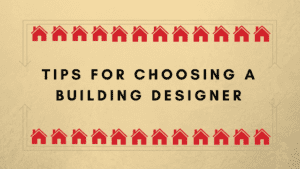27 Aug Tips for Choosing a Building Designer

One of the critical factors in the success of a planning project, is choosing the right team.
One of the most important people to achieve your vision is the designer. I have worked on many different projects and seen projects struggle due to dynamics between the client and the designer. Starting out with the right designer can save significant time and cost in the life of a project. So avoid having to start over part-way through a project and read on for some tips in choosing well the first time.
From observing many client-designer relationships I have identified some important areas that need to be considered when making a decision on who to work with:
- Style
- Trust
- Communication
- Motivation
STYLE
Obviously you need a designer to create buildings in the style that you prefer, particularly if you’re going to be living in the house. Take some time to think about and research the type of buildings you like. If there is a new development being built that you like the look of, approach the builder to find out who designed it. Collect some examples of projects that appeal to you. Starting with a clear brief of what you want to achieve will help get things going well from the start.
You also have to think about the personality style of the designer. You will be working closely with them so you will need to get along with them and make sure that there isn’t going to be a personality clash. You also need to make sure that they can work well with the other people in the team and that their style will fit in with how others work. A team that doesn’t work well together will not serve you best.
This leads us to the issue of trust.
TRUST

You need to have trust in the expertise and experience of the designer. You need to understand how knowledgeable the designer is and where their area of expertise lies. They don’t need to be an expert of everything (and if they claim such it might be a good idea to be cautious), but they do need to be upfront about their level of knowledge. They should also show willingness to engage with other experts to supplement their skills. In these ways you can build trust with them.
You need to trust that they will work effectively to your project goal and with the other members of the team. Decide if you need them to supply any other experts that are needed for your project or if you will. Do you have consultants that you prefer to work with, or do you want them to supply the necessary team members? Don’t forget that there is often some project synergies to having consultants who regularly work together and trust each other’s knowledge. If you do have other consultants on your team it may be worth bringing them together early to ensure that an effective working relationship is developed.
COMMUNICATION
Think about your preferred communication style. How do you want to be updated and involved in the process? Do you want face-to-face meetings or are you time poor and want emails so you can do things after hours in your own time? It is important that your preferences or expectations are identified so that there isn’t a clash with how the designer chooses to communicate.
It may be that your expectations regarding meetings or communication method will need to be adjusted, especially with other factors such as time limits to be considered. However, if communication preferences are discussed upfront, it can avoid issues or frustrations later. You can ensure that you are kept effectively updated throughout the project.
MOTIVATION
Your motivation for the project needs to be the designers’ motivation. They can then best represent your interests. By that I mean the outcome for the project needs to align for both yourself and the designer.
An example of a poor alignment is if your motivation is to get a planning permit and their motivation is to win an award. The designer’s motivation may mean that changes to the design that you are happy with and that will get you your permit won’t be done due to a belief by the designer that it compromises their design. In a case like that, your goal is not being served by the designer.
Similarly, if your goal is a particular design feature, for example obtaining unscreened bay views, then you will be best served by a designer who tries to find an innovative way to achieve that goal, rather than putting up screening at the first mention of “overlooking” from the Council.
This is not to say that there might not come a time when compromise has to be made or that every change wanted by Councils’ should be done blindly. Rather when a designer makes a decision of whether to make a change to the design or how to respond to comments from the Council, they need to have your goal at the forefront of their mind. The designer needs to understand what you are trying to achieve. Are there aspects to the project that you don’t want to compromise on? Are there certain features of the property or the design that you want incorporated? These should be discussed and considered throughout the process.
Similarly you will need to have an understanding of any compromises that may need to be made, because planning is often about compromise. Do you trust in the knowledge, expertise and motivation of your designer? Are you confident in their expertise to guide you through the process? As the project develops, the designer should be able to guide you through the process with their recommendations as well as support the recommendations of other consultants. If there is a compromise or change that is needed you should be guided through this.
CONCLUSION
Since I started my business I have developed close working relationship with my designers. We share similar ethics and motivation and have developed a strong appreciation of each others areas of expertise. I have seen firsthand how a team can work well together as well as how ineffective relationships and miscommunication can derail a project.
While consideration should be given to each team member about how they will contribute to the project, the designer plays a significant role in bringing your vision to life (or rather first to paper). They will also be involved in the project for a long time, potentially years as you move from inception to building. For this reason it is important to take your time finding the right person.
Given the amount of time involved, it should not be just about the end goal, but also about the journey. Make sure you start your journey with the right people.

